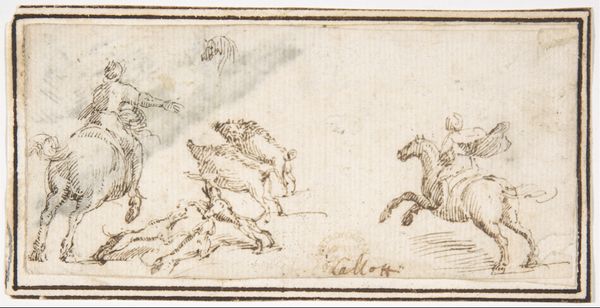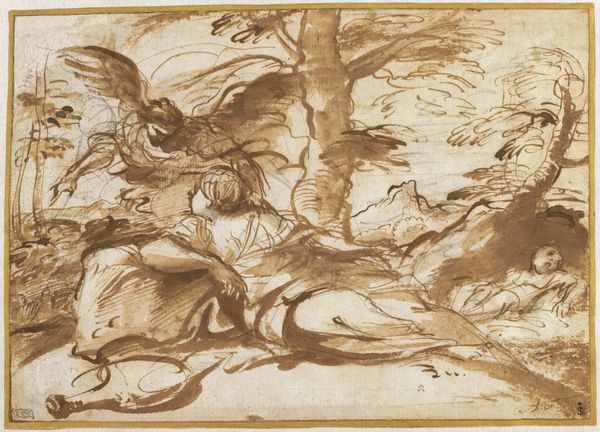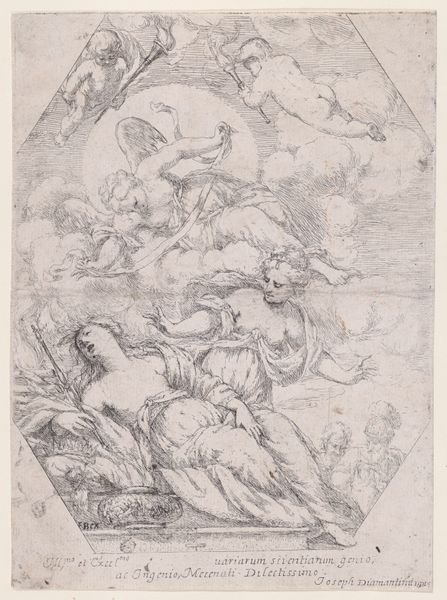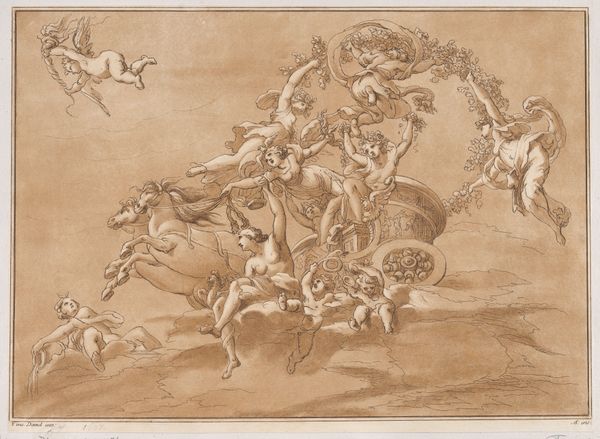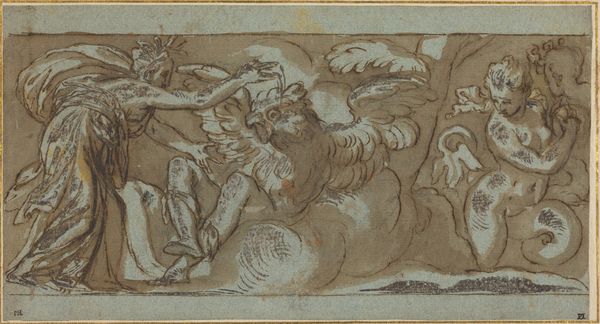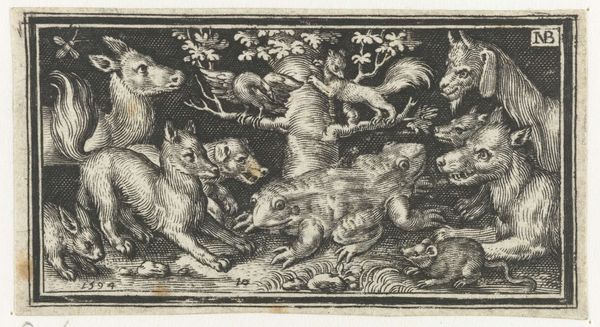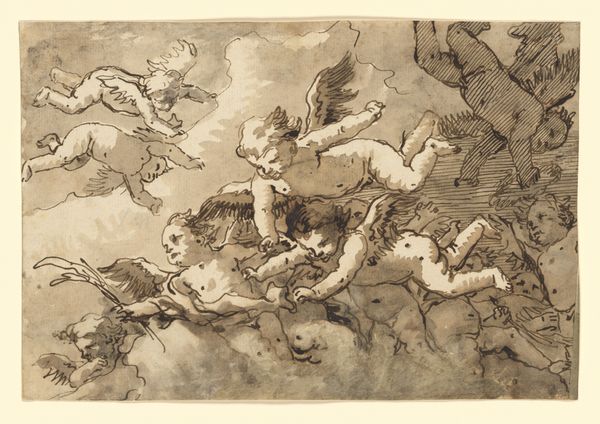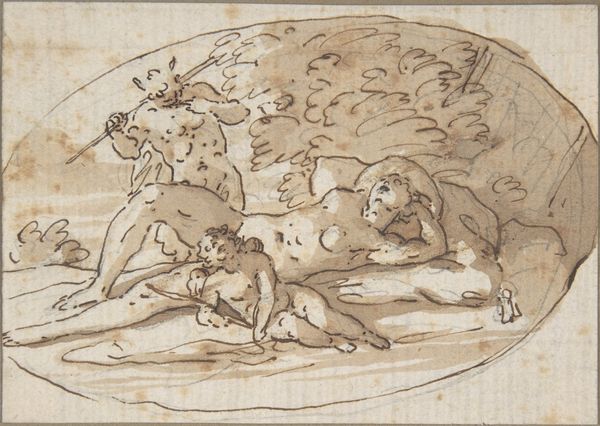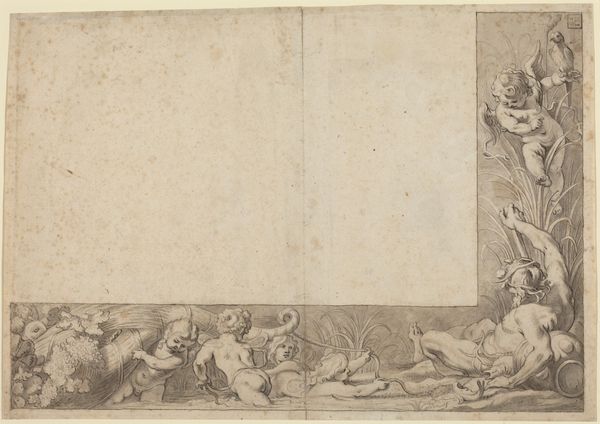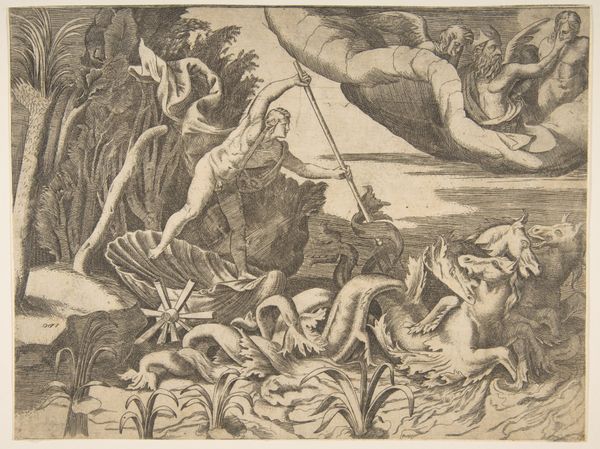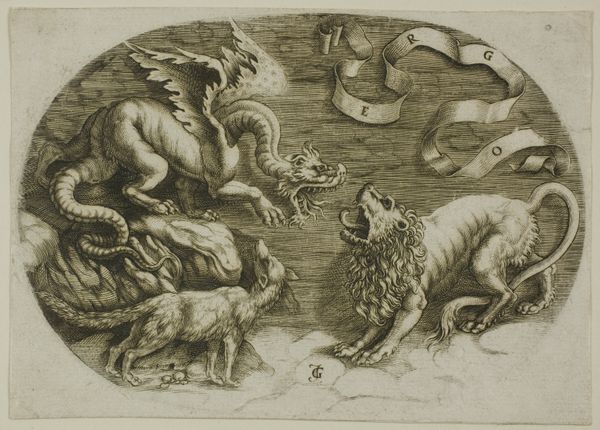
Design for a ceiling with an allegory of Justice 1665 - 1724
0:00
0:00
drawing, paper, ink
#
drawing
#
allegory
#
baroque
#
figuration
#
paper
#
11_renaissance
#
ink
#
coloured pencil
#
history-painting
Dimensions: sheet: 5 9/16 x 8 1/8 in. (14.2 x 20.6 cm)
Copyright: Public Domain
Curator: What a melancholic scene! It almost feels like witnessing a moral quandary rendered in monochrome. Editor: Indeed. We're looking at a drawing entitled "Design for a ceiling with an allegory of Justice." It's attributed to Hendrik-Frans Verbruggen, and although the exact date is unknown, it’s believed to have been created sometime between 1665 and 1724. It currently resides at the Metropolitan Museum of Art. Curator: The way the figures are draped along that architectural frame suggests a deep exhaustion with the very concept of justice. It's not triumphant, but weary. The cherubs almost look cynical, burdened with their duty. Editor: Precisely. Consider that Baroque ceiling design often served a dual purpose: aesthetic enrichment and ideological reinforcement. Here, Justice, usually a figure of resolute power, is reclining, seemingly troubled. Was Verbruggen reflecting on the perceived failings of the legal systems of his time? The artwork certainly raises pertinent social questions about our historical and present legal standards. Curator: And those scales held aloft by another cherub seem to hang heavy, unbalanced perhaps, which is incredibly telling about the perceived fairness or unfairness of those systems. Scales are a foundational symbol in the iconography of justice. And even the monochrome medium impacts interpretation here—is the use of black ink and grey washes indicative of this troubled point of view? Editor: Possibly so. The technique, utilizing ink on paper, allows for a starkness, highlighting the complexities and shades of grey inherent in justice itself. This ceiling design might have been intended not just to decorate but to provoke thought. A potent visual comment on law, order, and fairness during the late 17th, early 18th centuries. It makes you wonder how successfully that transferred through different social circles and whether Verbruggen’s opinions mattered given his stature in society at the time. Curator: Seeing such potent symbolism at play invites viewers into deeper reflection, allowing them to consider how perceptions and implementations of core ideologies develop through the eras and their ever-present influence in society. Editor: It’s a testament to how a single drawing, intended for a ceiling no less, can capture the weight of an abstract idea and make us confront it centuries later.
Comments
No comments
Be the first to comment and join the conversation on the ultimate creative platform.
